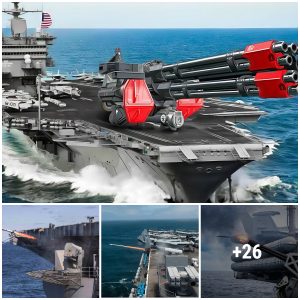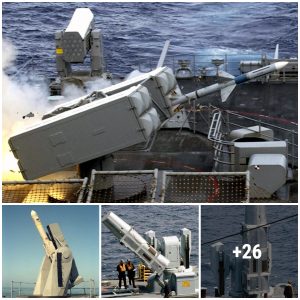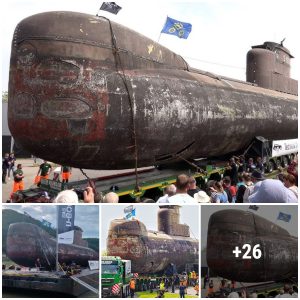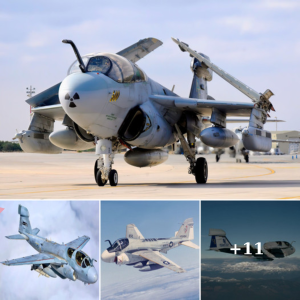Six decades of active service have been logged by the E-2 Hawkeye. The Northrup Grumman-built E-2 is capable of operating in all weather conditions and from aircraft carrier decks to provide tactical airborne early warning. Designed in the 1950s, the Hawkeye took its maiden flight in 1960 and entered service in 1964.
And today, remarkably, the E-2 is still in production; the E-2 has remained in production since 1960, making the Hawkeye the longest-produced carrier-based aircraft ever.

The E-2 Hawkeye
Meet the E-2 Hawkeye

The E-2 Hawkeye
The E-2 was designed to replace the E-1 Tracer. And the E-2 was the first aircraft ever built from scratch specifically for airborne early warning. The airborne early warning aircraft that came before the E-2 was modified from existing aircraft, demonstrating that AEW was an afterthought.

The E-2 Hawkeye
The engines of the E-2 make a distinct humming sound, so naturally, the aircraft has earned the nickname “Hummer.” The E-2 and its humming engine are rather distinct on board a carrier, mostly populated with jet-engine-equipped aircraft like the F/A-18 and F-35.

The E-2 Hawkeye
While the E-2 has served steadily as a workhorse success story, the initial design process was troubled. For one, the US Navy demanded that their next AEW aircraft could integrate data with the Naval Tactical Data System found aboard Navy vessels.

The E-2 Hawkeye
Then, the Navy demanded that the E-2 be able to land on aircraft carriers, which was especially difficult in the 1950s. In the 1950s, the US Navy operated some World War II-era carriers, like the Essex-class.
The Essex was modified to allow for jet operations but was still relatively small. Accordingly, the E-2 had strict height, weight, and length restrictions to allow for landing on a smaller deck. Unfortunately, the sizing requirements resulted in poor handling. In the end, the E-2 never flew from the Essex-class – the hassle was for naught.

The E-2 Hawkeye
The finished product E-2 Hawkeye featured high wings and two Allison T56 turboprop engines. To land on carriers, the Hawkeye used a retractable tricycle landing gear and tail hook.
The most distinctive feature of the E-2, however, is the 24-foot diameter rotating radar dome, known as a rotodome. The rotodome contains the E-2’s long-range radar and IFF system – basically, the equipment that allows the E-2 to perform the mission it was designed to perform.
The E-2 is the only carrier-based airplane that features a rotodome. Typically, rotodome-equipped aircraft, the E-3 Sentry for example, are based on land.

The E-2 Hawkeye
To save space aboard the tightly confined aircraft carrier, the E-2 features a Sto-Wing, which folds to save space when the Hawkeye is not in use. When in use, the E-2 requires a five-person crew. Up front: a pilot and a co-pilot. In the back, below the rotodome: a combat information center office, air control officer, and radar operator.

The E-2 Hawkeye
Although the E-2 has enjoyed an enduring service history, the plane had problems when it first entered service in 1964.
Most pressingly, the E-2 had an inadequate cooling system, which allowed the plane’s tightly packed avionics equipment to overheat. The entire fleet had to be grounded because the problem was so rampant.

The E-2 Hawkeye
Several upgrades were made, especially with respect to on-board computer systems. The result was the E-2B variant, which naval aviators found was much more reliable.
Gradually, the E-2 proved itself, situating itself as a fundamental piece of modern carrier air wings. Today, six decades after debuting, four E-2s are featured in each carrier air wing.





